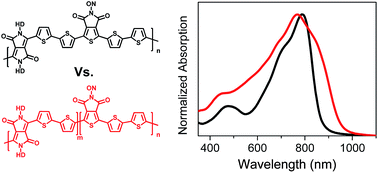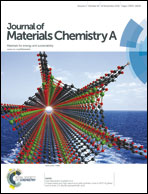Comparing random and regular diketopyrrolopyrrole–bithiophene–thienopyrrolodione terpolymers for organic photovoltaics†
Abstract
Isomeric random and regular alternating π-conjugated terpolymers comprising diketopyrrolopyrrole (DPP), thienopyrrolodione (TPD), and bithiophene (2T) were synthesized to study the effect of the sequential distribution of monomeric units on the semiconducting properties. The optical and electrochemical properties and the performance in photovoltaic cells of the random and regular terpolymers are found to be significantly different. DPP2T-rich sections in the random terpolymer cause higher HOMO and deeper LUMO energy levels and a smaller optical band gap compared to the regular terpolymer. The randomization of DPP and TPD units along the chain has a negative effect on the photovoltaic performance, resulting in power conversion efficiencies of merely 1.0% for the random terpolymer while a more favorable efficiency of 5.3% is obtained for the regular terpolymer when combined with a fullerene acceptor.

- This article is part of the themed collection: 10th Anniversary: Dedicated Authors

 Please wait while we load your content...
Please wait while we load your content...